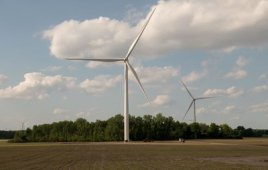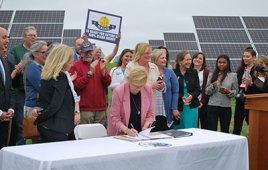Bolting a tower to its foundation is probably work for a hydraulic torque wrench that can spin 2.5-in. nuts past 8,100 Nm. But climb a tower section during construction and more often electric torque wrenches, weighing 28 lb and less, get lugged to the job. A few reasons for the transition from hydraulic to electric include weight, accuracy, speed, accountability, and more.
A hydraulic wrench with compressor could weigh 70 lb and more when considering hoses and oil. One project manager remarked that a hydraulic wrench makes it necessary to get as close to a corresponding pressure reading as possible for the needed torque. Hydraulic torque equipment also tends to overheat requiring time to cool off, during which torquing operations halt. Lastly, hydraulic tooling means its testing and documentation is done by hand, which can lead to errors.
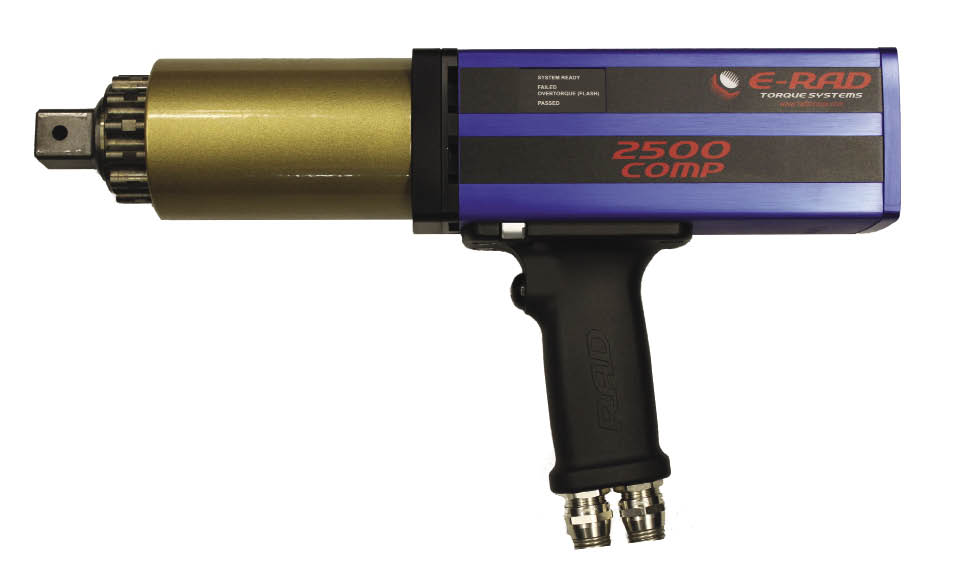
Electric torque wrenches allows setting torque values by supervisors before a day’s work begins. Techs on the site need only select the right job number to prep the wrench. The electric wrench allows setting six to eight different torque setting and locking them into place. This secures the torque amount and does not let others adjust the value without a key.
A lead wind project engineer at Wanzek Construction remarked that the margin for error is a lot less with an electric wrench because the tools can be “locked” to a particular torque value. Electric wrenches work with ±3% accuracy. In addition, torque limits on the wrenches can be set for several jobs at one time.
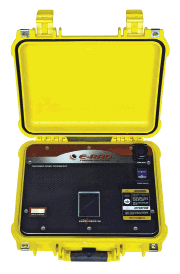
Controls and data-logging features for the E-RAD series of electric torque wrenches store in the 12 lb case.
In addition, more bolting work asks for accountability – knowing that each bolt is tightened to a prescribed level. More wind turbine manufactures require proof that each bolt has been installed and maintained at the appropriate torque specs to maintain the manufacturer’s warranty. Recent electric torque wrenches allow collecting such data. On-board data loggers report how many bolts have been torque along with failed torques and over torques. Also, the wind project engineer’s estimate is that electric torquing takes about 33% less time than does hydraulic torquing.
Shorter operations let tower-climbers “fly” in a next tower section and have flanges bolted before the ground guys are ready to bring up the next piece. This trims time for ground crew by letting tower workers get to the next section and prepped before another tower segment arrives. The durability of the electric torque wrench also helps reduce time.
The wind farm project manager adds that the calibration and testing capabilities exceed those of the hydraulic torque tools. Electric wrenchs, he says, let him digitally track all torque testing. When testing the electric wrench, data transfers to a program that logs it in a format that can be manipulated to fit one needed for the tower manufacturer’s specifications.
A few electric torque wrenches also let users tighten bolts to a torque or an angle. This simplifies work on GE rotors, says one engineer. For example, the tool could be set to 350 Nm plus 120°. Once bolt tightening begins, the gun automatically torques the bolt to 350Nm, stalls for a moment, and then move the nut 120°. This is vital to some torque procedures because it lets techs torque in a continuous motion without stopping to rely on someone’s eye to add the 120°.
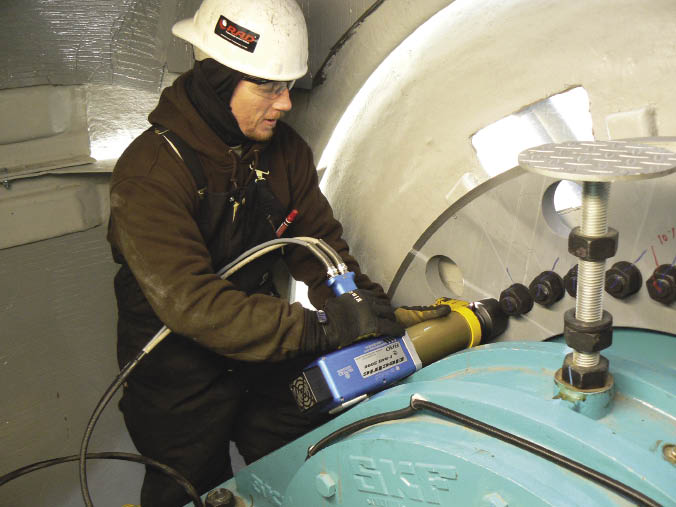
A construction worker in a new nacelle puts the final torque on a rotor hub using an electric torque wrench from RAD Torque Systems.
The simple operation of the electric wrench helps eliminate mistakes when setting the torque value. The digital display on the electric wrench lets users change a torque value along with units in ft.-lbs or Nm. This removes calculation errors. What’s more, there is no oil changing necessary as with a hydraulic pump. Also, the only maintenance required would occur from normal wear and tear. Operating an electric wrench is as simple as hooking the torque gun to the box, plugging it in, turning the box on, setting the torque value, and starting the work. WPE
By: Aaron Johnson, Electronics Engineering Manager, RAD Torque Systems www.radtorque.com
Filed Under: Uncategorized


